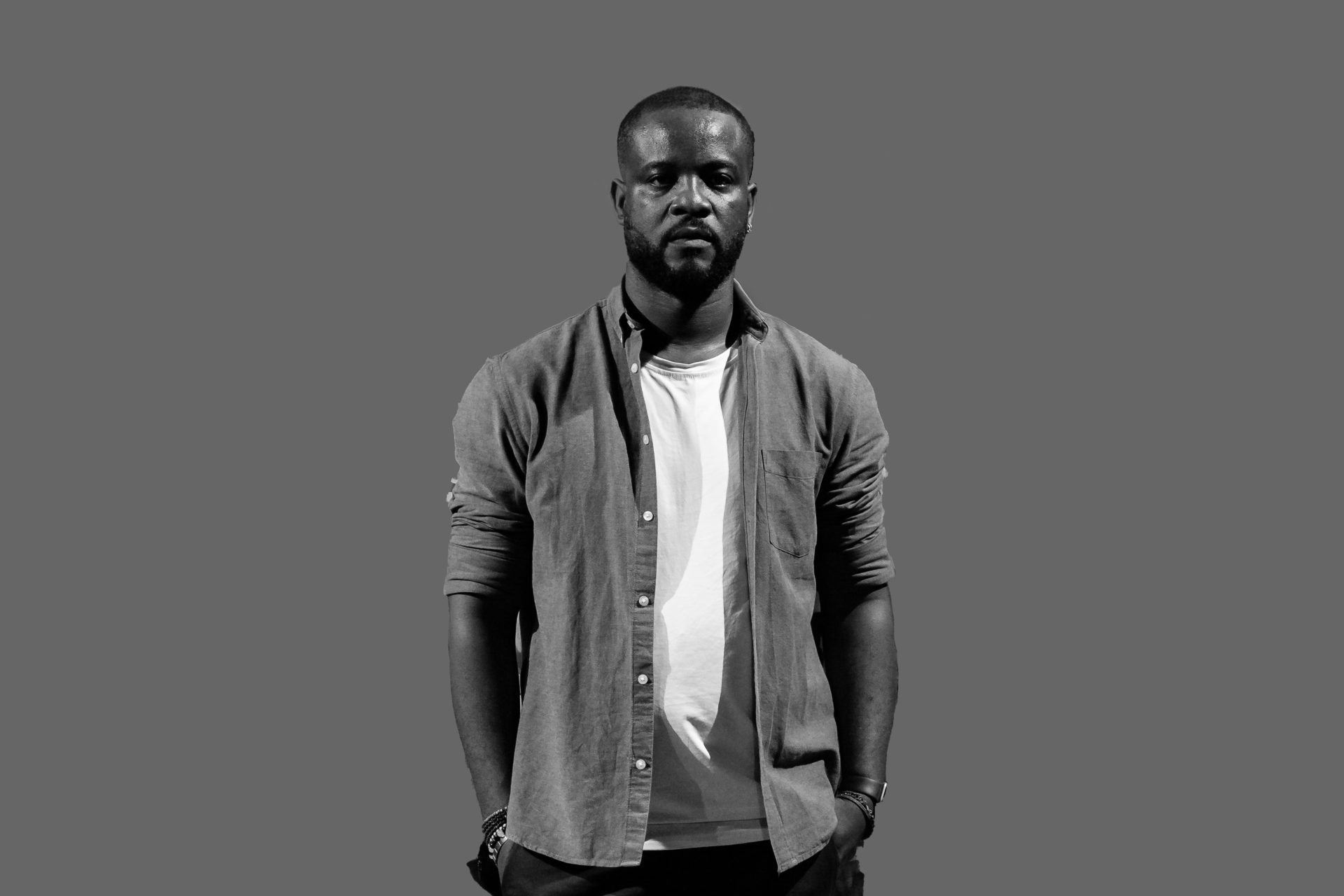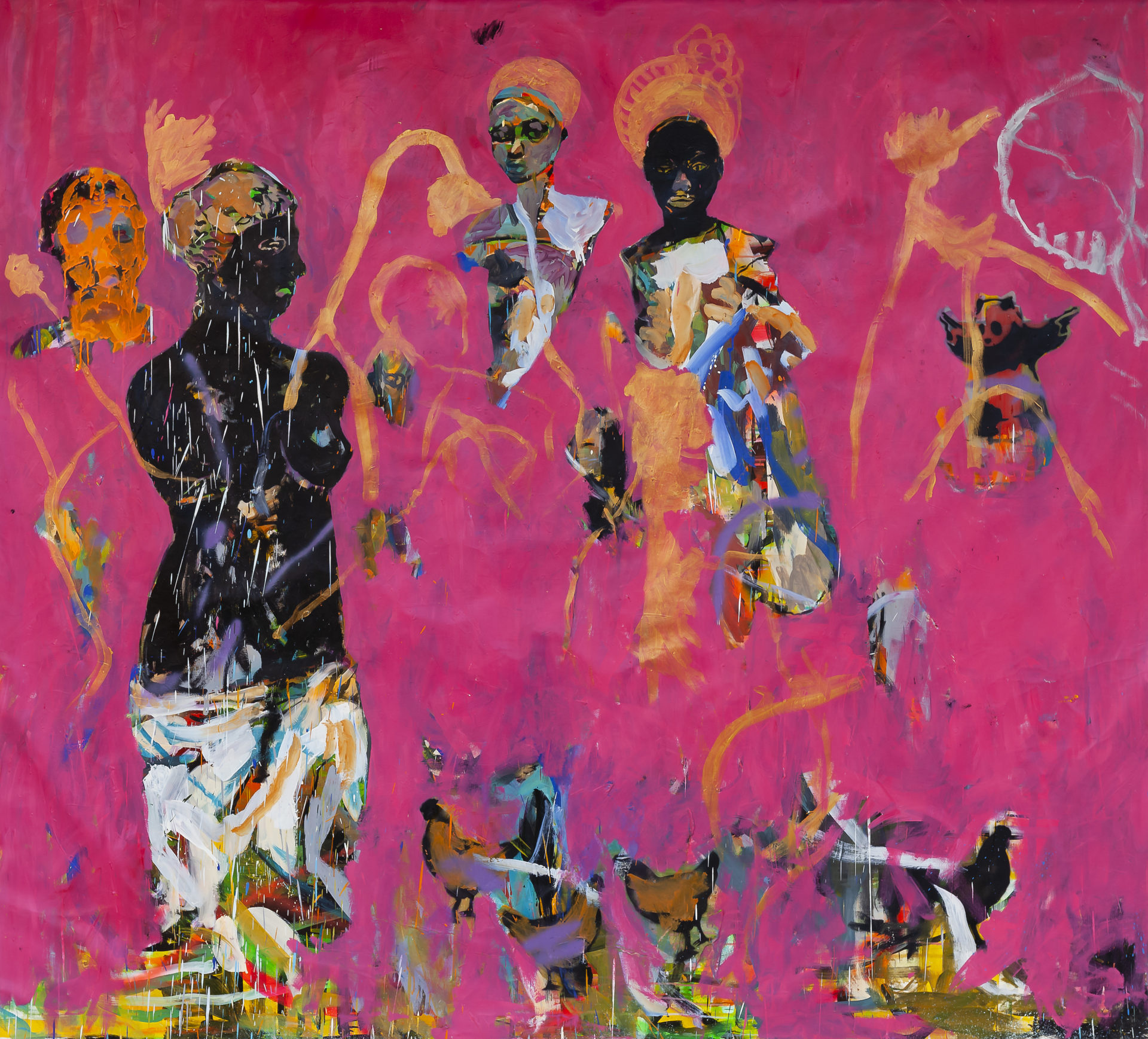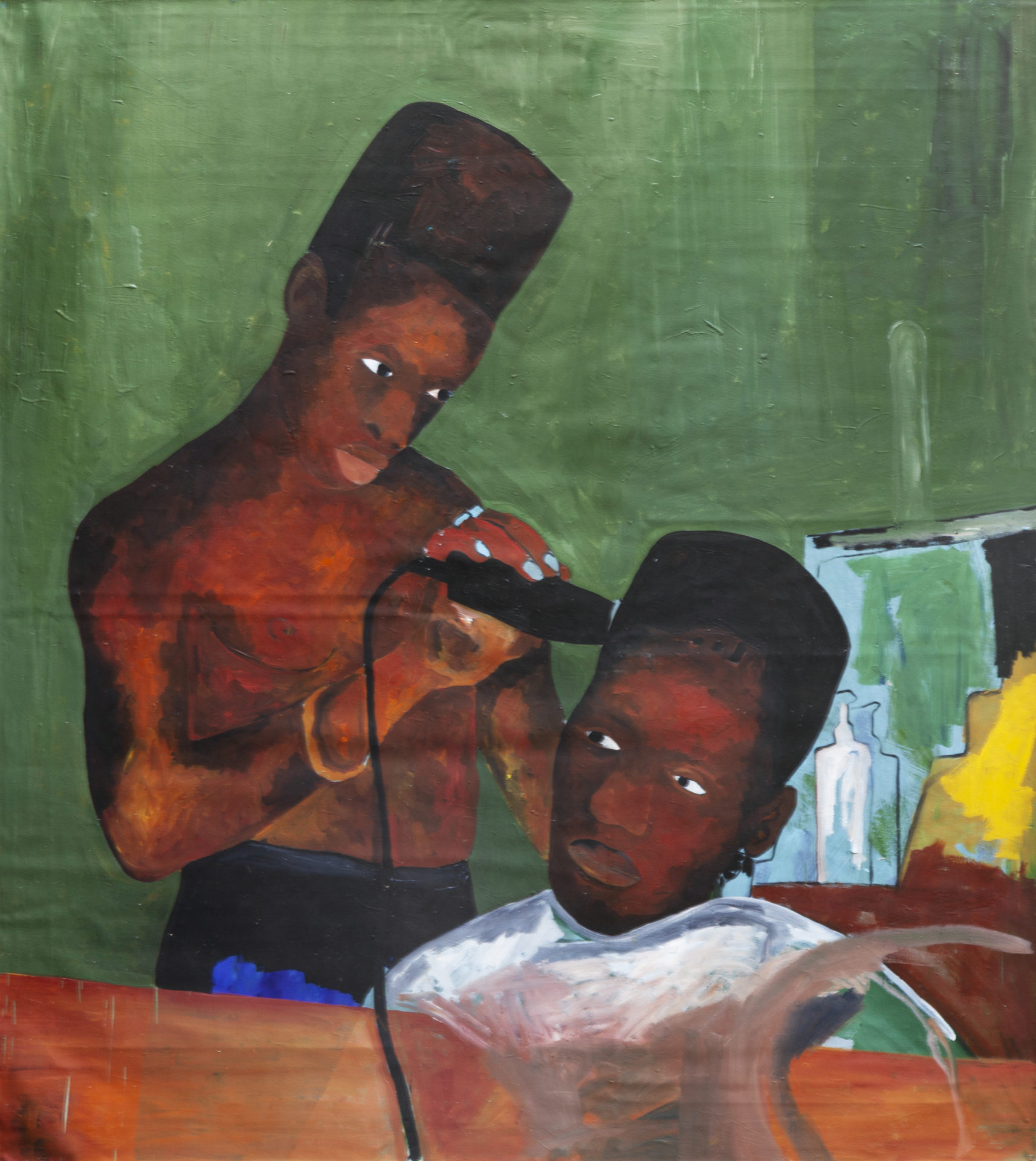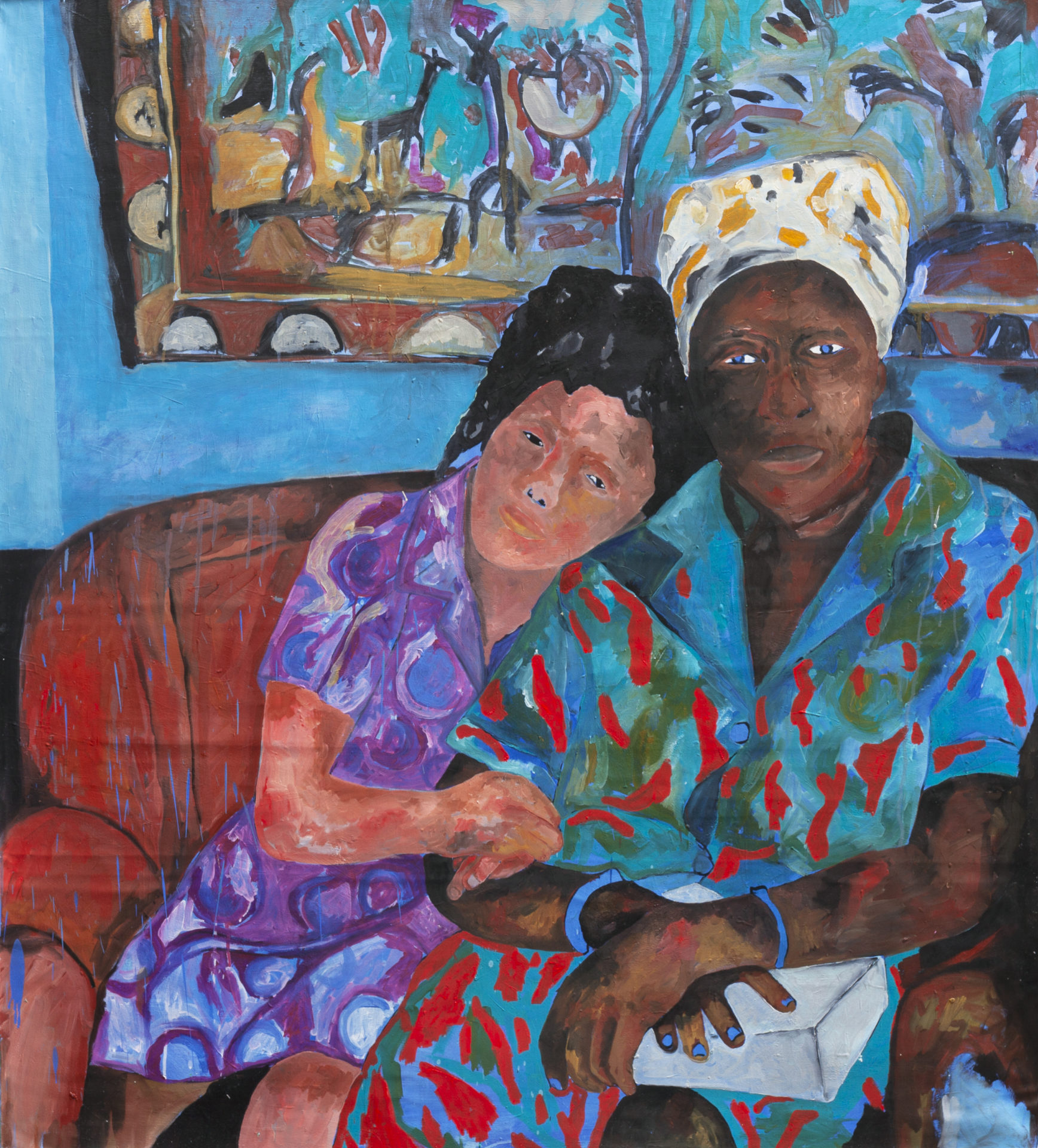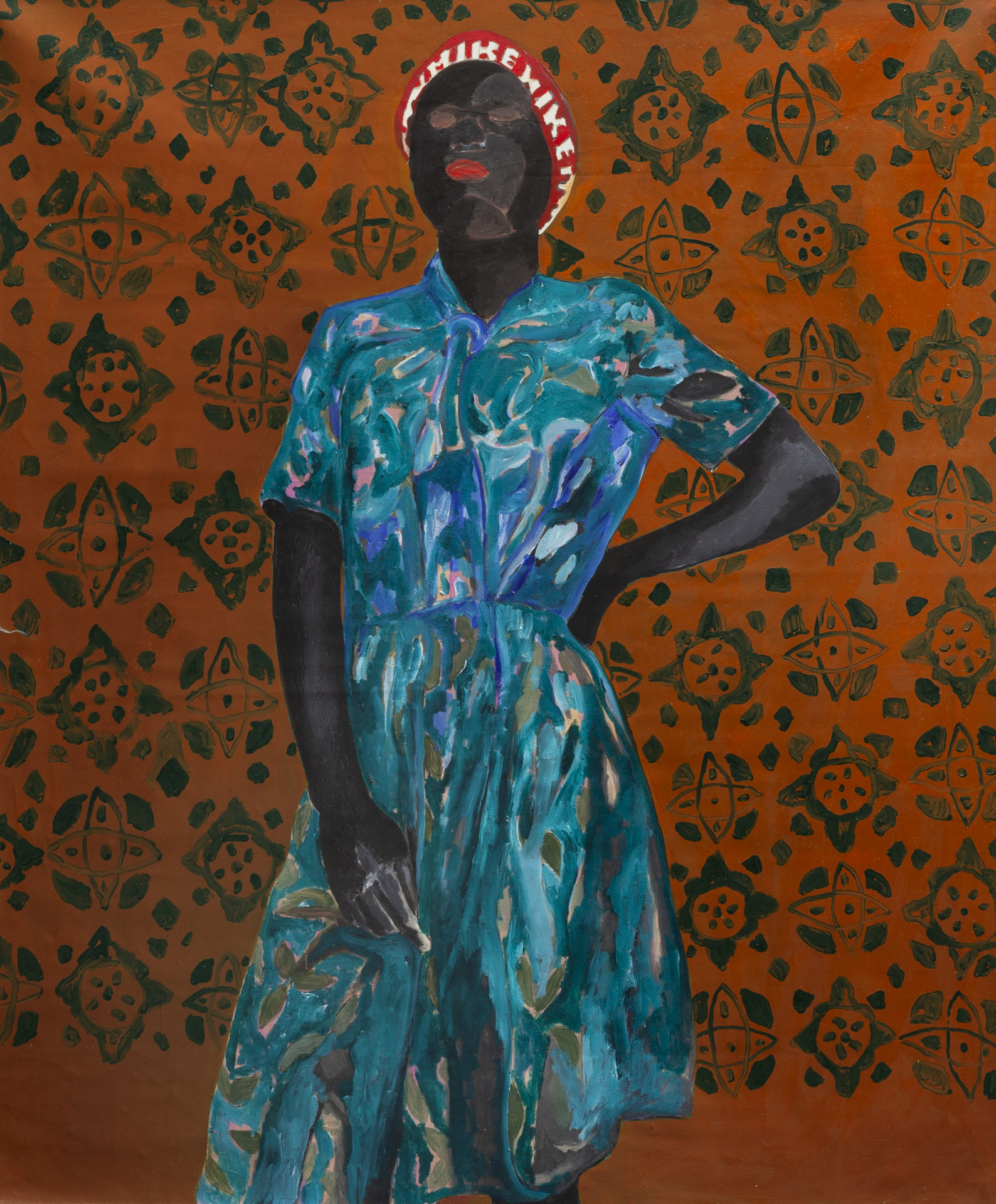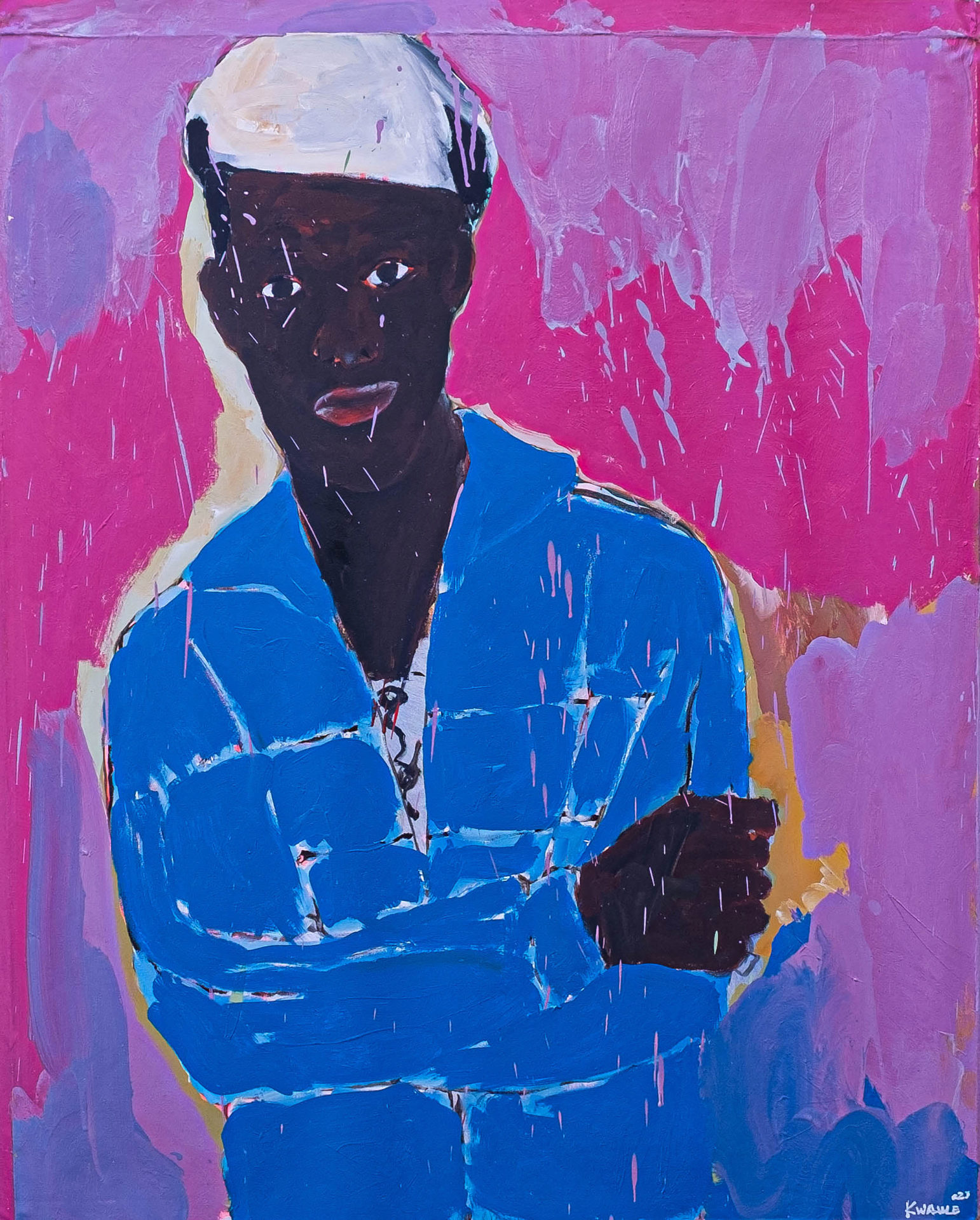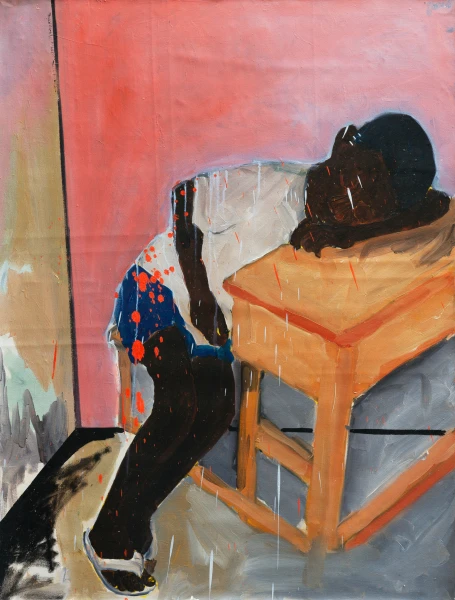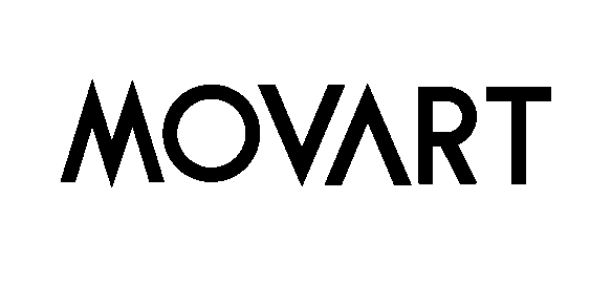Kwame Sousa (1980, São Tomé and Príncipe) is a multidisciplinary artist who investigates the history of São Tomé while exploring a wide range of media, techniques and styles. He discovered his taste for art at an early age, starting to draw as a self-taught artist. In 2001 he joined the group of young artists hosted by Teia de Arte, where, under the guidance and support of João Carlos Silva, he had the opportunity to learn and share different artistic languages with artists from all over the world, taking part in the 2nd São Tomé and Príncipe Arts Biennial in 2002. Later, in 2004, he began his academic career in Portugal, studying atthe Escola de Artes e Ofícios do Espetáculo and then painting and drawing at Ar. Co-Independent Art School, with the support of a grant from the Portuguese Cooperation.
Over the last few years, many galleries, art fairs and capitals have welcomed his work, including the Luanda Triennale, the Bamako Film and Art Festival, the Venice Architecture Biennale, the Droog Gallery in Amsterdam, ARCO Lisbon, Madrid and Art In A Box in New York and Washington. Kwame Sousa belongs to the third generation of artists from São Tomé, and is currently considered one of its most influential figures.
Having built up a large part of his career and recognition internationally, one day he decided to return home and set up an art school. In 2017, on a plot of land next to his father’s house, the first and only Visual Arts School currently operating in São Tomé and Príncipe was born. This school, Ateliê M, is the birthplace of a new cultural and artistic current in São Tomé, with artists who are more aware and open to the world, but who never forget the roots that surround them, the context they come from. It expressed clearly and particularly in their work.
In his personal artistic career, Kwame has been particularly interested in researching and tracing the processes of colonial independence and the cumulative processes of building African identity.
